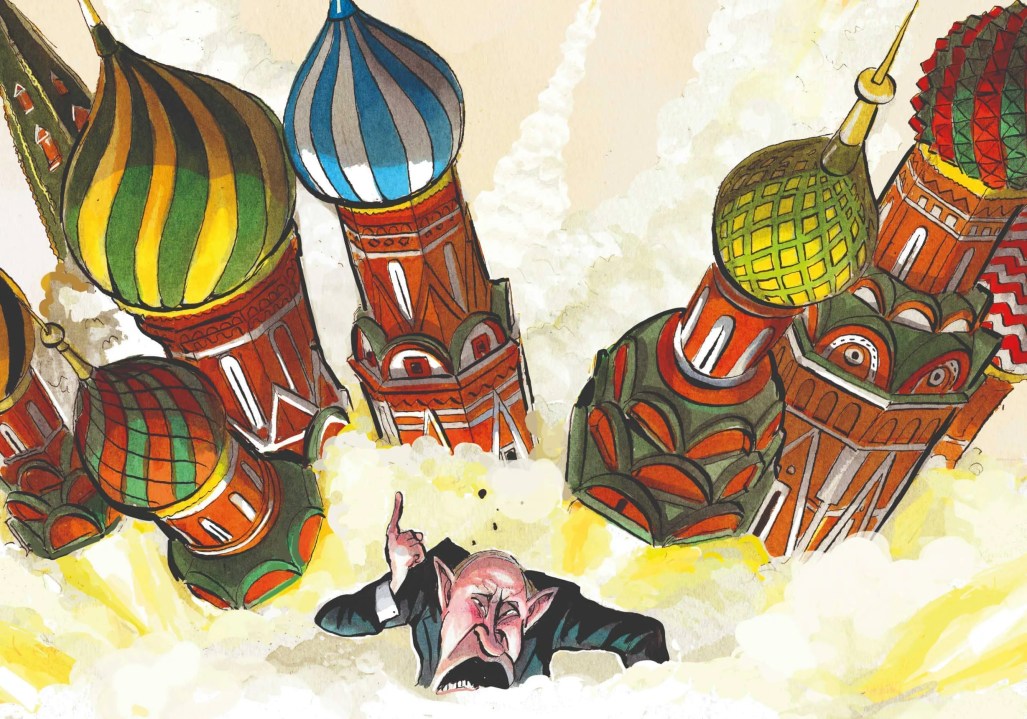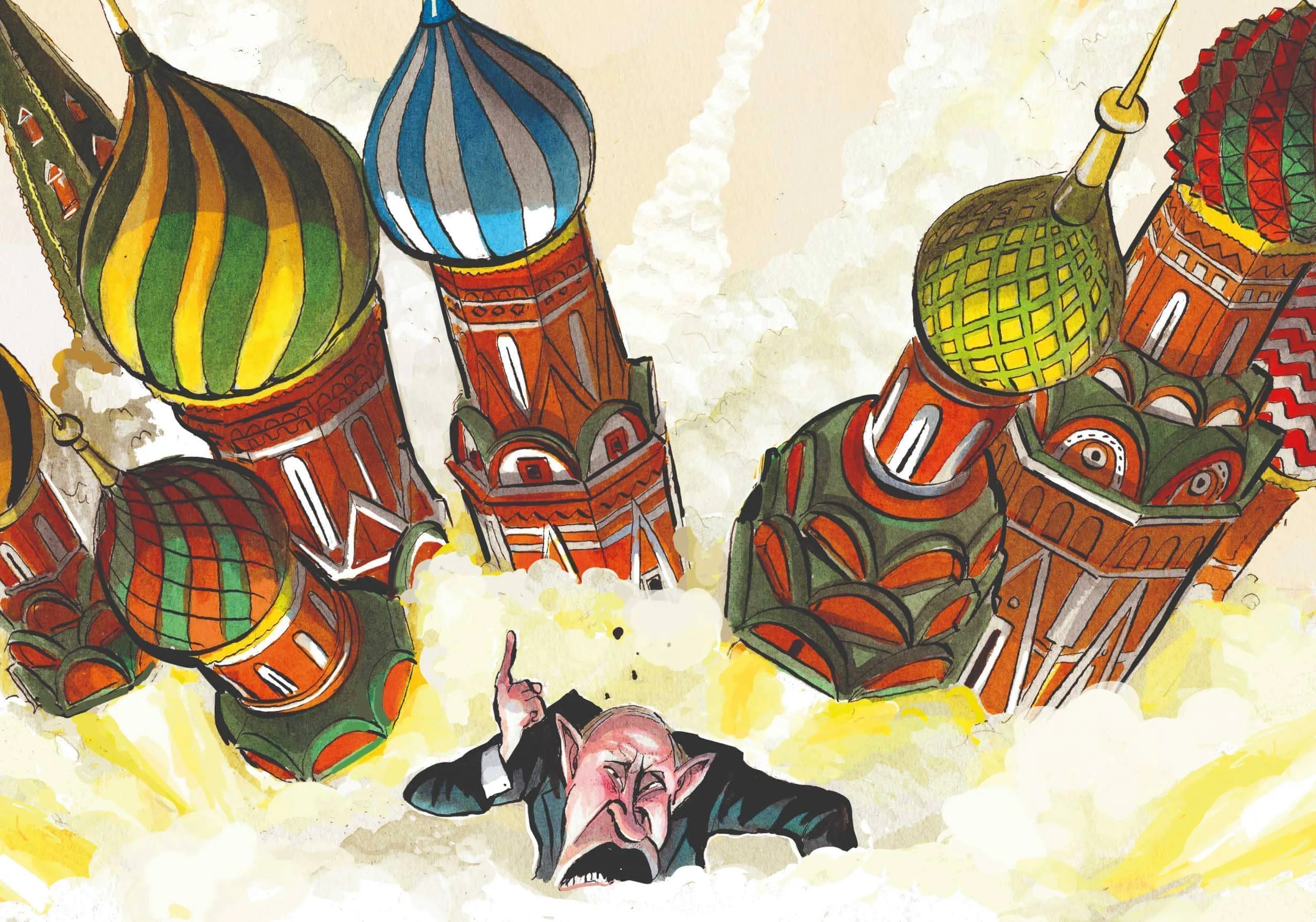A Russian attack on the city of Dnipro earlier today included the use of an intercontinental ballistic missile, according to the Ukrainian Air Force. The RS-26 Rubezh was reportedly launched from Astrakhan Oblast on the Caspian Sea, although some analysts remain sceptical. Russia has made no official comment, but it would be the first use of an ICBM in the conflict in Ukraine, representing a deliberate raising of the stakes and a clear signal to Kyiv’s allies.
Using an intercontinental ballistic missile to strike Ukraine is performative overkill
On Tuesday, which marked the 1,000th day of the war, Ukrainian forces launched American-supplied MGM-140 ATACMS tactical ballistic missiles at an ammunition depot near Karachev in Bryansk Oblast, 70 miles inside Russia. This followed President Biden’s decision to remove restrictions on the use of the weapons. They were first fired in October last year but had previously been limited to use against targets at or near the Russian border. Washington had feared that their use over longer ranges would risk escalating the conflict.
There was certainly an escalation of rhetoric, even by the Kremlin’s hysterical, pseudo-victimised standards. Sergei Lavrov, President Putin’s dour, long-serving foreign minister for whom no absurdity or hypocrisy is too great an effort, declared the attack ‘a signal that they [the United States] want escalation’.
Putin then announced a revision of Russia’s nuclear doctrine, lowering the threshold for the use of nuclear weapons to include responding to conventional attacks on Russia or its ally Belarus which ‘created a critical threat to their sovereignty and (or) their territorial integrity’. Previously, such a response was anticipated only in the event of a nuclear attack by an adversary or a conventional attack which threatened the existence of the state. Last night, it was then announced that Ukraine had fired UK-made Storm Shadow missiles at Russian territory for the first time in the conflict.
The reported use of an ICBM must be seen in this context. Putin’s intention is to show that he is willing to use any weapon at his disposal. Those who warned that Biden’s decision was reckless and escalatory will feel vindicated, and Putin’s many cheerleaders in Europe and America will have experienced a grimly thrilling shiver of satisfaction. But there are a number of qualifying factors.
Using an intercontinental ballistic missile to strike Ukraine is performative overkill. As the name suggests, these weapons are designed to deliver warheads – generally nuclear ones – over vast distances. During the Cold War they would have allowed the United States and the Soviet Union in theory to target each others’ capitals and major population centres. Dnipro, in eastern Ukraine, is only around 450 miles from the alleged launch site in Astrakhan, and the fact that the attack also included air-launched Kh-47M2 Kinzhal aeroballistic missiles and Kh-101 cruise missiles demonstrates that an ICBM was not needed in terms of range.
The RS-26 Rubezh believed to have been used only just qualifies as an ICBM. Although the missile, with a light or no payload, has proved its ability to reach more than 3,500 miles, it has generally been tested over much shorter distances of 1,200 miles and less. It has no greater range than the Kh-101 cruise missiles also fired, so, with a conventional rather than a nuclear warhead, it is not the step-change it might initially appear.
What has Vladimir Putin proved? That he is willing to use a larger missile to attack Ukraine’s cities. But that is still a vast distance from breaching the nuclear threshold which has remained unbroken since the American bombing of Nagasaki on 9 August 1945. The revision of Russia’s nuclear doctrine was purely declaratory, intended to intimate the West. The truth is that any decision to use a nuclear weapon will be taken by Putin and him alone, any formal strategic doctrine will not limit his freedom of action. The rules describe rather than prescribe what the president can do.
The considerations governing a nuclear strike remain exactly as they were. Even the use of a small tactical nuclear device would be a huge and disproportionate escalation, the consequences of which Putin cannot accurately calculate. It would certainly cause devastating harm to his relationship with China, which this week urged restraint and has repeatedly referred to the joint statement issued in January 2022 by the five permanent members of the UN Security Council that ‘a nuclear war cannot be won and must never be fought’.
The reaction of the United States cannot be easily foreseen either: while there would be an enormous reluctance to match any nuclear strike, Donald Trump’s much-touted unpredictability means Putin cannot be sure he would not find the new president in a periodic Dr Strangelove mood.
President Putin has rattled the sabre more loudly, if the use of an ICBM is confirmed. But the sabre remains in its scabbard, and the hazards of removing it are just as great as they were. Putin’s hope is that the western powers will recoil in fear at this morning’s attack. If they do, they are admitting that the Kremlin can dictate the terms of the conflict in Ukraine. That would be a catastrophic concession.









Comments